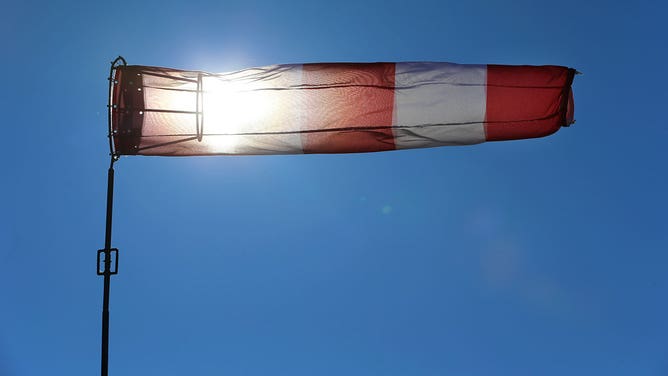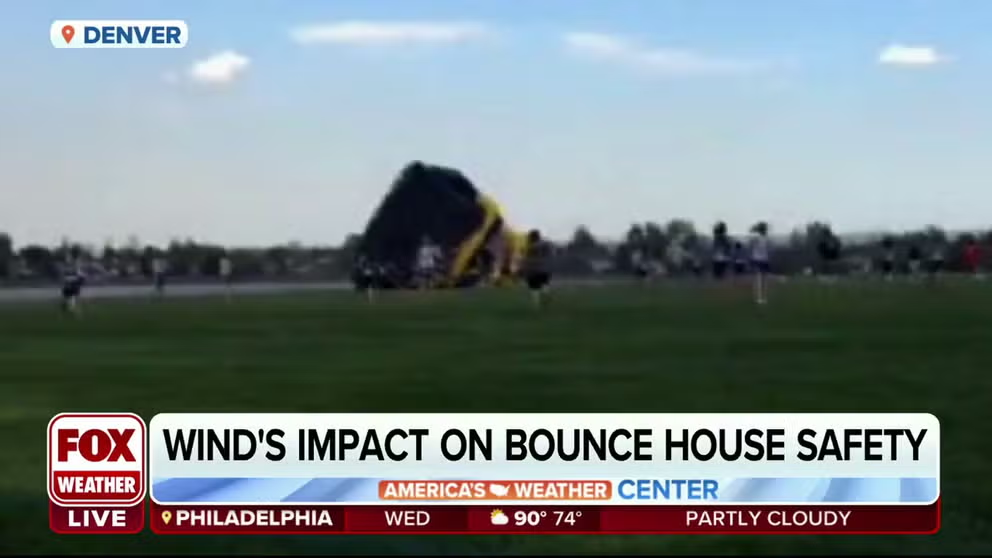What you should know about High Wind Warnings
High winds can be both damaging and treacherous.
High winds topple power lines onto Arizona drivers
Dashcam footage shows powerful winds bringing down the power lines along a Tucson street on July 5. (Video from July 2024)
Strong winds are not only inconvenient but also dangerous. And that danger is amplified when they reach speeds that prompt forecasters to issue High Wind Warnings.
While the criteria for such warnings can differ from place to place, the actions you should take to stay safe are the same.
Here’s what you should know about High Wind Warnings and how to prepare.
What is a High Wind Warning?

A windsock stands at a landing site for paragliders inflated by a gust of wind horizontally in the sky.
(Karl-Josef Hildenbrand/picture alliance via Getty Images)
The National Weather Service will issue a High Wind Warning when winds are expected to pose a threat to life or property.
In general, a High Wind Warning is issued when winds not related to thunderstorms or severe weather are expected to be sustained at 40 mph or greater for at least an hour, or above 58 mph at any time. That threshold is generally increased to 50 mph or greater at higher elevations.
What should I do when gusty winds are expected?
How does wind impact safety of bounce houses?
Geography professor at the Franklin College of Arts and Sciences John Knox explains on FOX Weather. (Video from August 2022)
Whenever windy weather is expected, secure any loose objects on your property. This includes patio furniture, umbrellas, grills, garbage cans and holiday decorations. Trampolines and bounce houses have also been lifted off the ground during gusty winds.
Strong winds can also knock down trees, so it is also a good idea to check the trees on your property around your home or business and ensure they are in good health. Any dead limbs should be cleared away.
What should I do when a High Wind Warning is issued?
Watch: Dust blows as high winds hit south-central Colorado
Video captures dust blowing in Alamosa as strong wind gusts hit south-central Colorado. (Video: Dene Miles via Storyful)(Video from April 2022)
The safest place to be during high winds is indoors. If a High Wind Warning is issued, you should postpone any outdoor activities until the winds relax.
If you are outside during high winds, watch for flying debris. Tree limbs and even street signs can become loose and airborne during a windstorm and pose a serious risk to people who are outside.
High winds can bring down trees and power lines. If you come across a downed line, assume that it is electrified. Stay away, warn others to stay away and call for help. Also, avoid anything that the wire is touching, such as vehicles and tree limbs.
Driving can be extremely difficult during high winds, especially for high-profile vehicles such as semi-trucks and RVs. Drivers should slow down and keep both hands on the steering wheel. Keep a safe distance from other vehicles since gusts can push them outside their lane of travel. Also, watch for debris that may be blown onto the road.


